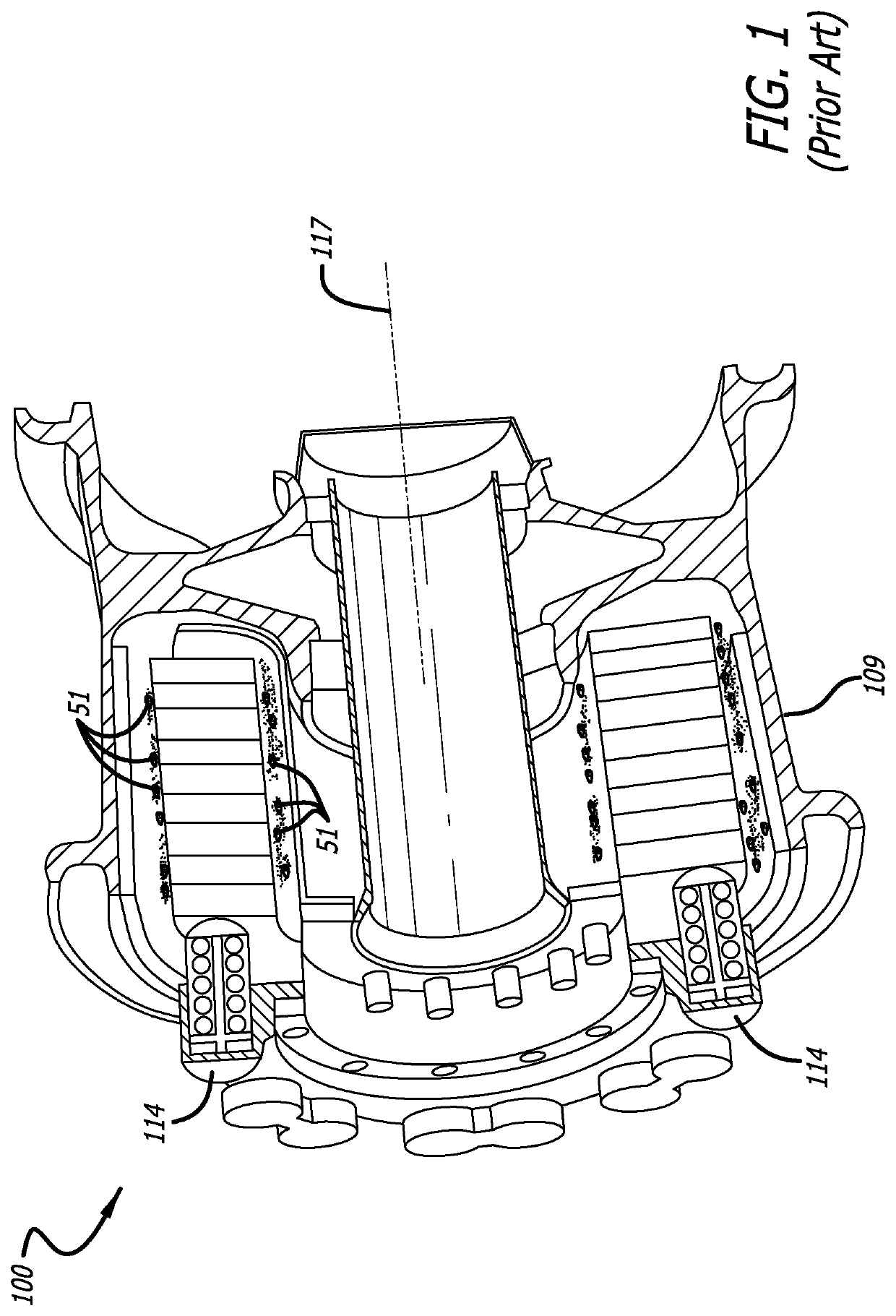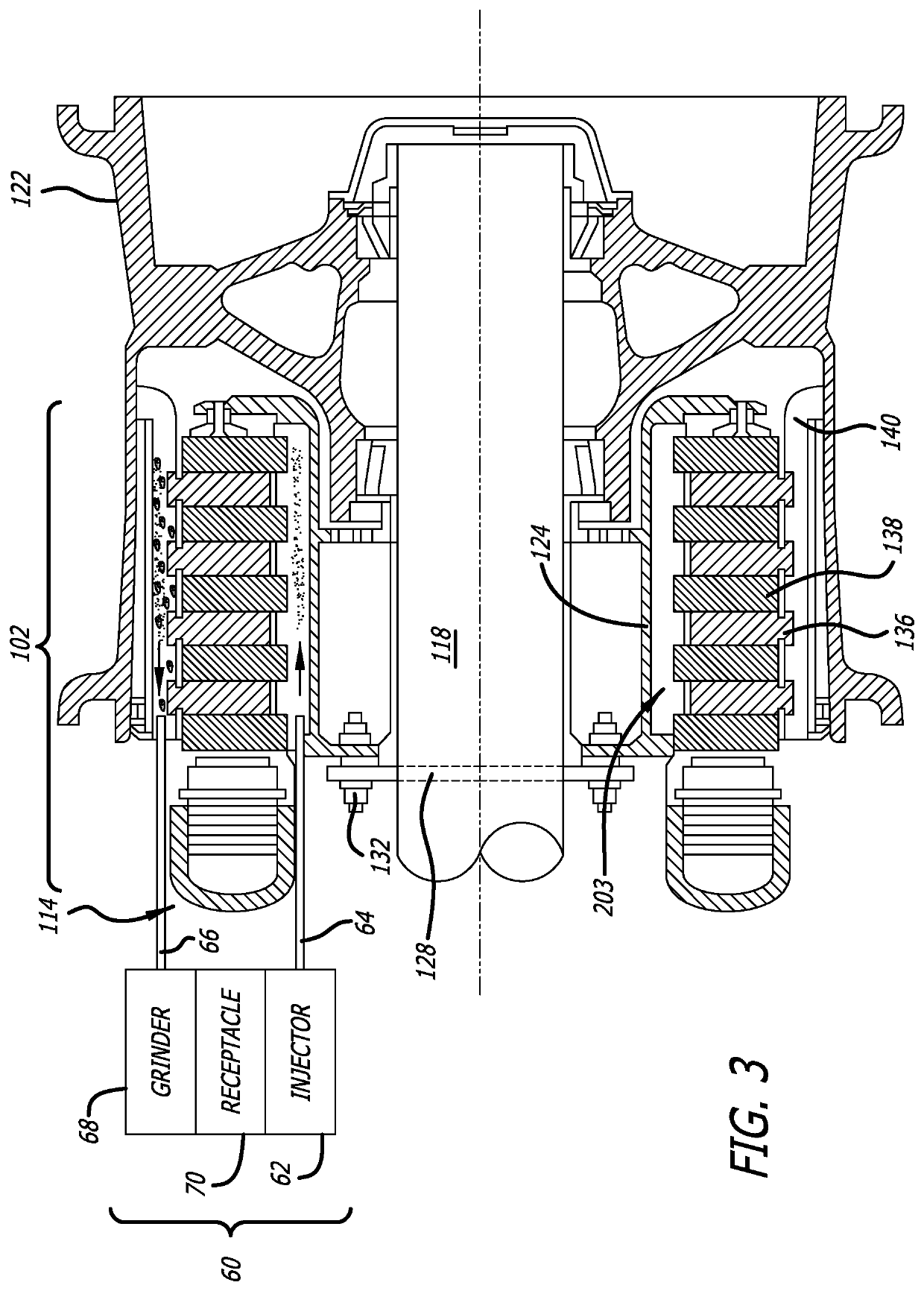System and method for reducing aircraft brake wear
a technology of aircraft brakes and brake pads, which is applied in the direction of braking elements, cleaning processes and apparatuses, cleaning using liquids, etc., can solve the problems of brake wear, reduce the tendency of large particles to break off the surface of the carbon disc, so as to reduce the effective roughness of the carbon surface, and reduce the effect of carbon brake wear
- Summary
- Abstract
- Description
- Claims
- Application Information
AI Technical Summary
Benefits of technology
Problems solved by technology
Method used
Image
Examples
Embodiment Construction
[0025]A prior art aircraft wheel and brake assembly 100 is shown in FIG. 1, where a wheel 109 encompass a plurality of discs of the brake assembly mounted along a centerline 117, that cooperate to arrest the velocity of the aircraft under the influence of an actuator 114. Carbon brakes generally comprise a piston housing 202 including pistons, a torque tube, and a carbon brake stack. The carbon brake stack is made up of several discs (stators) that are keyed to the stationary torque tube, and interleaved discs (rotors) that are keyed to the inside rim of the wheel and rotate with the wheel. The stack is bounded by the piston housing 202 and a pressure plate 205 on one side, and a backing plate 204 on the other side that compress the stators and rotors. During the interaction of the discs, particles 51 that can prematurely wear the discs are dislodged around the inner and outer diameter of the discs. Most of the particles 51 eventually get expelled from the brake assembly 100 and are...
PUM
 Login to View More
Login to View More Abstract
Description
Claims
Application Information
 Login to View More
Login to View More - R&D
- Intellectual Property
- Life Sciences
- Materials
- Tech Scout
- Unparalleled Data Quality
- Higher Quality Content
- 60% Fewer Hallucinations
Browse by: Latest US Patents, China's latest patents, Technical Efficacy Thesaurus, Application Domain, Technology Topic, Popular Technical Reports.
© 2025 PatSnap. All rights reserved.Legal|Privacy policy|Modern Slavery Act Transparency Statement|Sitemap|About US| Contact US: help@patsnap.com



